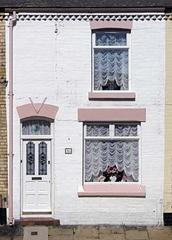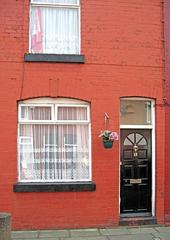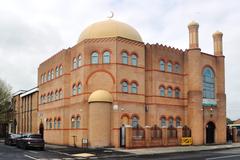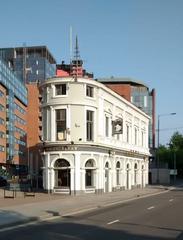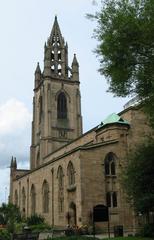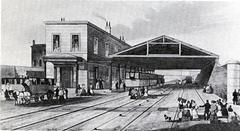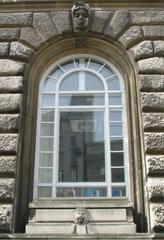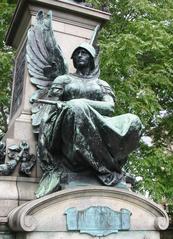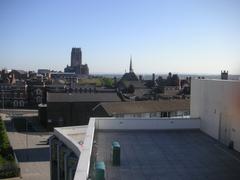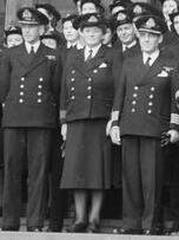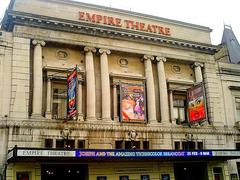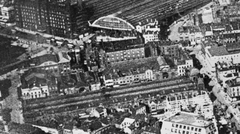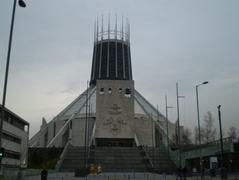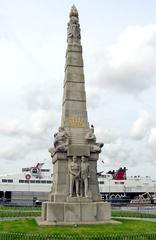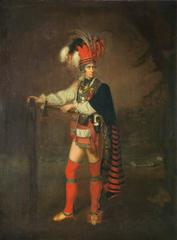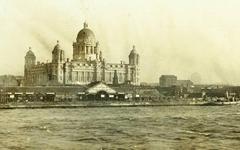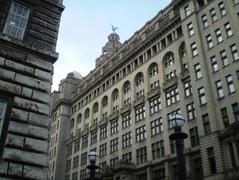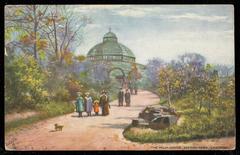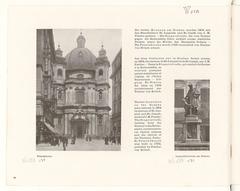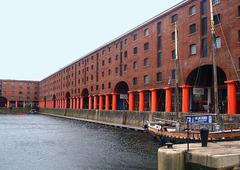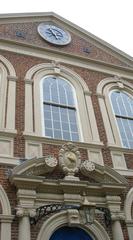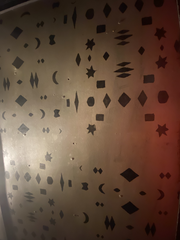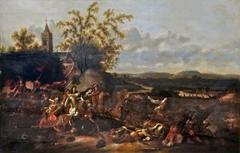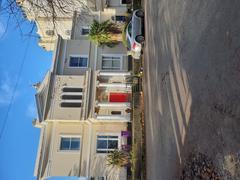Equestrian Statue of Edward VII, Liverpool: Visiting Guide, Historical Significance, and Visitor Information
Date: 14/06/2025
Introduction
The Equestrian Statue of Edward VII in Liverpool is a landmark of enduring historical and artistic value. Located at the iconic Pier Head and also at St George’s Plateau, this monumental bronze statue by Sir William Goscombe John honors King Edward VII and embodies Liverpool’s Edwardian prosperity and close ties to the British monarchy. As both a public work of art and a focal point for civic life, the statue draws visitors from around the world seeking to explore Liverpool’s heritage, architecture, and vibrant urban landscape. This guide details everything you need to know about visiting the statue, its historical background, restoration efforts, and nearby attractions—ensuring a memorable and informed experience.
Table of Contents
- Historical Background
- Location and Accessibility
- Visiting Hours, Admission, and Tickets
- Guided Tours and Special Events
- Nearby Attractions and Walking Routes
- Heritage Status and Conservation
- Visitor Experience
- Restoration History
- Photography, Travel Tips, and Amenities
- Frequently Asked Questions (FAQ)
- Conclusion and Recommendations
- References
Historical Background
Origins and Commissioning
Commissioned in 1910 following the death of King Edward VII, the Equestrian Statue of Edward VII was designed to reflect Liverpool’s prominence as a global port and its loyalty to the monarchy. Funded by public subscription, the commission was entrusted to renowned Welsh sculptor Sir William Goscombe John, celebrated for his expertise in public monuments and equestrian statuary. Although the project initially faced delays due to debates over its placement and the impact of World War I, it was ultimately installed at Liverpool’s Pier Head—one of the city’s most significant urban spaces (Flickr: Brigster).
Artistic Design and Symbolism
Goscombe John’s statue depicts King Edward VII in full military regalia, mounted on a powerful horse, symbolizing strength, leadership, and royal authority. The statue, cast in bronze and set atop a granite plinth, showcases intricate Edwardian Baroque details including the Order of the Garter sash. The monument’s grandeur and craftsmanship reflect the city’s aspirations at the height of its prosperity (Historic England).
Unveiling and Public Reception
Unveiled in 1921, the statue quickly became a focal point for civic pride. Its placement at Pier Head, overlooking the River Mersey and adjacent to the Liver Building, ensured both prominence and accessibility. The monument continues to feature in public ceremonies and commemorations, reinforcing its role in Liverpool’s collective memory.
Edward VII and Liverpool
The reign of Edward VII (1901-1910) was marked by peace, industrial growth, and social transformation. Liverpool, then a crucial port within the British Empire, benefited from this era of prosperity. The statue thus serves as a tribute to both the monarch and the city’s Edwardian heritage (Visit Liverpool).
Location and Accessibility
The Equestrian Statue of Edward VII is situated at Pier Head (postcode: L3 1DP), with a second prominent placement at St George’s Plateau near Lime Street Station. Both locations are central to Liverpool’s “Cultural Quarter” and are surrounded by major thoroughfares, making them highly accessible.
- By Train: Liverpool Lime Street Station is a short walk from St George’s Plateau; Moorfields and James Street Stations serve the Pier Head area.
- By Bus: Queen Square Bus Station and multiple city routes stop within walking distance.
- By Car: Public parking is available at St John’s Shopping Centre, NCP car parks, and nearby city lots. Due to limited parking, public transport is recommended.
- Accessibility: Both sites offer paved, step-free paths suitable for wheelchairs and strollers. Tactile paving and ramps are available.
For navigation, use Google Maps or Visit Liverpool’s interactive map.
Visiting Hours, Admission, and Tickets
The Equestrian Statue of Edward VII is an outdoor public monument accessible 24 hours a day, 7 days a week, year-round. There is no admission fee and no tickets required at either location.
Guided Tours and Special Events
Many local tour operators and heritage organizations include the statue in guided walking tours of Liverpool’s waterfront and cultural quarter. Remembrance Day services and civic celebrations often use the statue as a focal point. For current tour schedules, consult Visit Liverpool or inquire at Liverpool Visitor Centres.
Nearby Attractions and Walking Routes
Both statue locations are surrounded by Liverpool’s premier historical and cultural sites:
-
At Pier Head:
- Royal Liver Building, Cunard Building, Port of Liverpool Building
- Museum of Liverpool, Merseyside Maritime Museum
-
At St George’s Plateau:
- St George’s Hall, Walker Art Gallery, World Museum Liverpool, Liverpool Central Library, Empire Theatre
Suggested walking routes start at Liverpool Lime Street Station, proceed through St George’s Hall, and culminate at Pier Head, offering a comprehensive cultural experience.
Heritage Status and Conservation
The statue at Pier Head is Grade II* listed, recognized for its exceptional artistic and historic interest (Historic England). This designation ensures ongoing protection and professional maintenance as part of Liverpool’s heritage assets. The monument plays a role in the city’s (former) UNESCO World Heritage waterfront (UNESCO Liverpool Maritime Mercantile City).
Visitor Experience
Visitors to the statue can expect:
- Unrestricted public access
- Interpretive signage providing historical context
- Year-round events including commemorations and festivals
- Benches and landscaped gardens for relaxation
- Ample opportunities for photography with scenic city and waterfront backdrops
The area is lively yet offers moments of quiet reflection, making it suitable for all ages.
Restoration History
Conservation Challenges
Exposed to harsh waterfront weather and pollution, the statue has required ongoing conservation. Early efforts included protective paint coatings, which eventually obscured details and required removal (Victorian Web).
2008 Major Restoration
A significant restoration took place in 2008, coinciding with city redevelopment projects. The statue was temporarily moved for expert cleaning and repair, revealing its original patina and restoring artistic details. A modern wax-based protective coating was applied to ensure durability against the elements (Liverpool Echo).
Ongoing Maintenance
Liverpool City Council and conservation professionals conduct regular inspections and gentle cleaning to preserve the monument’s condition (Victorian Web).
Photography, Travel Tips, and Amenities
- Best time to visit: Early mornings and late afternoons offer softer light and fewer crowds.
- Photography: The statue is an excellent subject, especially with the River Mersey or St George’s Hall as a backdrop.
- Accessibility: Both locations are wheelchair-friendly.
- Amenities: Public toilets are available at St George’s Hall and nearby shopping centers; cafés and shops are within walking distance.
- Safety: The area is well-lit and monitored by CCTV.
Frequently Asked Questions (FAQ)
Q: Is there an admission fee to visit the Equestrian Statue of Edward VII?
A: No, the statue is outdoors and free to visit at any time.
Q: Is the site wheelchair accessible?
A: Yes, both Pier Head and St George’s Plateau locations are fully accessible.
Q: Are guided tours available?
A: Yes, many walking tours include the statue. Check with local visitor centers for details.
Q: Can I take photographs?
A: Absolutely! Photography is encouraged.
Q: What other attractions are nearby?
A: St George’s Hall, Walker Art Gallery, World Museum Liverpool, Museum of Liverpool, and the Royal Liver Building are all within walking distance.
Conclusion and Recommendations
The Equestrian Statue of Edward VII is more than an impressive work of public art; it is a dynamic symbol of Liverpool’s history, civic pride, and royal connections. Free to access and set amidst some of the city’s most celebrated landmarks, it is an essential stop for any visitor interested in Liverpool’s rich past. The statue’s ongoing conservation, inclusion in cultural events, and proximity to other major attractions make it a living part of the city’s heritage.
For a deeper experience, explore guided tours via the Audiala app, follow local tourism platforms for news and events, and plan your visit to coincide with public ceremonies for an authentic taste of Liverpool’s vibrant cultural life.
References
- Historic England Listing for Equestrian Statue of Edward VII
- Historic England Detailed Listing (Grade II*)
- Liverpool City Council Visitor Information
- Victorian Web – Restoration and Conservation
- Liverpool Echo – 2008 Restoration Coverage
- Visit Liverpool Official Guide
- Flickr: Brigster – Statue Location
- Public Monuments and Sculpture Association
- UNESCO Liverpool Maritime Mercantile City
- World Museum Liverpool
- Walker Art Gallery
- Liverpool Central Library
- Empire Theatre Liverpool
- Geograph – Statue Photos
